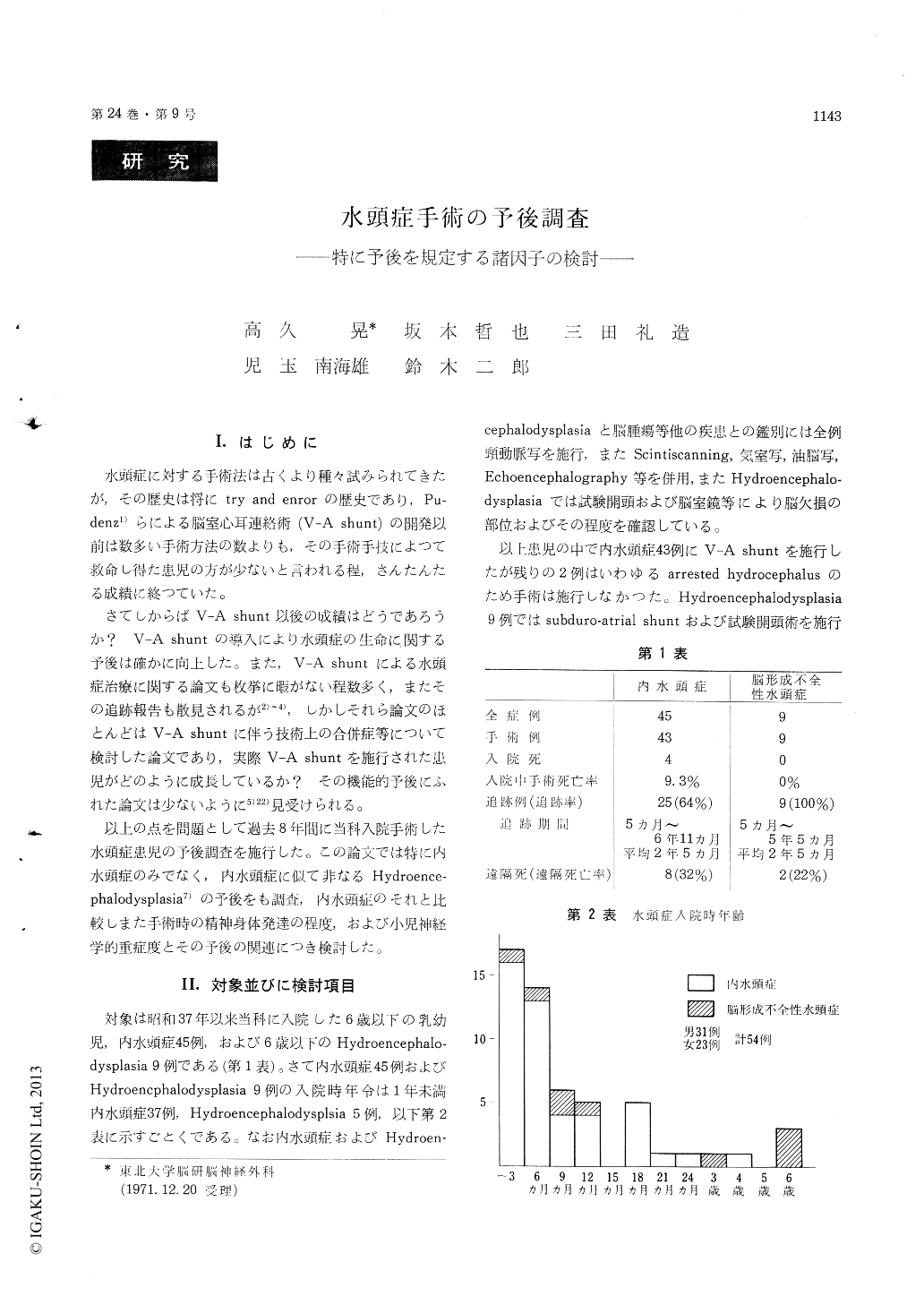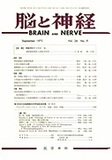Japanese
English
- 有料閲覧
- Abstract 文献概要
- 1ページ目 Look Inside
I.はじめに
水頭症に対する手術法は古くより種々試みられてきたが,その歴史は将にtry and enrorの歴史であり,Pu—denz1)らによる脳室心耳連絡術(V-A shunt)の開発以前は数多い手術方法の数よりも,その手術手技によつて救命し得た患児の方が少ないと言われる程,さんたんたる成績に終つていた。
さてしからばV-A shunt以後の成績はどうであろうか? V-A shuntの導入により水頭症の生命に関する予後は確かに向上した。また,V-A shuntによる水頭症治療に関する論文も枚挙に暇がない程数多く,またその追跡報告も散見されるが2)〜4)),しかしそれら論文のほとんどはV-A shuntに伴う技術上の合併症等について検討した論文であり,実際V-A shuntを施行された患児がどのように成長しているか? その機能的予後にふれた論文は少ないように5)22)見受けられる。
There have been many reports about the surgical treatment for the hydrocephalic children. Technical problems of shunting operation have been discussed on most of these reports, while the mental and/or somatic follow-up studies after the procedure have been a few.
On this paper, the follow up studies after the shunting operation for 43 cases of internal hydro-cephalus and 9 cases of hydroencephalodysplasia in infants and children under 6 years old were reported with special reference to their preoperative condi-tions.
1) 4 cases of 52 operated cases of hydrocephalic children died in hospital, consequently, mortality rate after operation during hospitalization was 7.7 %. Follow up study could be carried out on 34 cases in which 25 cases were internal hydrocephalus and 9 cases were hydroencephalodysplasia.
Follow-up ratio was 70 %.
The follow-up period ranged from 5 months to 6 years and 11 months. (average ; 2 years and 5months) 2) General condition of the cases at the time of follow-up was classified to the next four grade, that is, normal, minor deficit, major deficit, and death.
30 % of discharged cases was normal, 20% was minor deficit, 20% was major deficit and 30% was died. Comparing with the prognosis of internal hydrocephalus and hydroencephalodysplasia, the lat-ter was better than the former.
3) Correlation between the preoperative neuro-logical deficit and prognosis was investigated. The prognosis of the cases with the optic atrophy, sun set phenomen and mental retardation preoperatively were unsatisfactory.
The prognosis of the cases with heavy enlarged head, and thin cortex in internal hydrocephalus was not satisfactory. The prognosis of the cases of hydroencephalodysplasia was relatively good except the cases with large defect of bilateral hemispheres. From the above mentioned, it might be concluded that the shunting operation for the hydrocephalic child should be performed as early as possible.

Copyright © 1972, Igaku-Shoin Ltd. All rights reserved.


